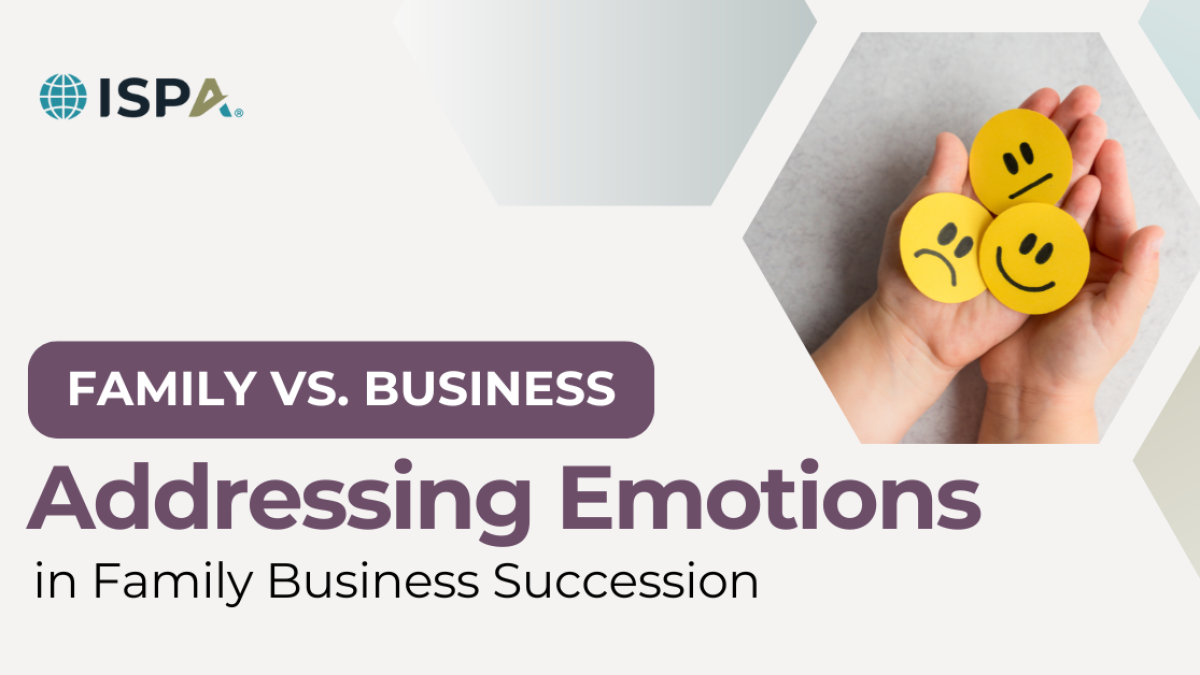Family vs. Business: Addressing Emotions in Family Business Succession

Learn how advisors address emotions in family business succession using structured succession planning models that build trust and continuity.
Quick Summary
Addressing emotions in family business succession is one of the most overlooked and critical parts of every succession planning model. Advisors who recognize emotional dynamics gain the trust that technical expertise alone can’t secure. This article explores how to navigate tough conversations, identify emotional risks, and guide families toward continuity and collaboration.
Why Emotions Derail Family Succession
Family businesses live in tension between love and performance. Family is supposed to be about unconditional acceptance — “I love you because you’re my brother.” Business, on the other hand, is about results — “What have you done for me lately?”
These competing values create friction during succession. Resentment, favoritism, and unspoken expectations often become the true obstacles to continuity. When emotions go unaddressed, succession plans stall, relationships fracture, and business value erodes.
As Hugh Roberts, CFP®, and Certified Succession Planner™ (CSP®) with Rawls Business Succession Planners, explains, “You can’t run a business like a family, and you can’t run a family like a business.” Avoiding these emotional landmines may feel safer, but it’s often what causes the most lasting damage. Roberts, also the author of Help! I’ve Got Family in the Business, has helped countless owners confront these challenges head-on.
How to Position Yourself to Handle Emotional Issues
Advisors who master the relational side of planning stand out. Start with relationships first, expertise second. When families trust your intent, they’ll open up about what really drives their decisions.
You don’t have to be a therapist. Your role is to connect emotional awareness to business strategy within a structured succession planning model.
Tips to build trust and confidence:
- Lead with curiosity by asking about legacy, identity, and family roles.
- Be honest when you don’t have all the answers, but show you’ll help find them.
- Strengthen your business acumen so your relational insights carry weight.
- Frame emotional topics as risks to value and continuity, not personal criticism.
Questions That Open the Can of Worms Wisely
Asking hard questions can feel risky, but that’s where trusted advisors prove their value.
Here are prompts that bridge emotion and action:
- What does “legacy” mean to each family member?
- Who feels overlooked or underappreciated?
- How might leadership changes affect family roles and identity?
- What non-financial outcomes matter most to you?
These conversations link human emotion to strategic decision-making — the foundation of every effective succession planning model.
Practical Checklist for When Emotions Surface
When emotions enter the room, structure creates safety.
Use this checklist to stay composed and productive:
- Listen first and validate feelings before offering solutions.
- Map stakeholders and understand each person’s emotional drivers.
- Translate emotion into structure by linking feelings to governance, compensation, or leadership systems.
- Use neutral facilitators or mediators if tensions escalate.
- Follow up consistently since trust grows from care and reliability.
When you apply empathy through disciplined process, you shift the conversation from compliance to continuity and strengthen both the family and the business.
Key Takeaways
- Addressing emotions in family business succession is essential for lasting results.
- Emotional intelligence complements, not replaces, technical expertise.
- Advisors who integrate empathy into their succession planning models become long-term trusted partners.
- Structure and follow-up transform emotional risks into continuity plans.
Advance Your Expertise in Succession Planning
If you guide family businesses through transition, explore how ISPA’s frameworks can help you strengthen both relationships and results.
Learn the Foundation:
Read: Mastering the Succession Matrix®: A Game-Changer for Business Advisors.
Build Your Expertise:
Learn about the Certified Succession Planner™ (CSP®) designation.
Go Deeper:
Read Help! I’ve Got Family in the Business by Hugh Roberts, CFP®, CSP®, to gain practical strategies for guiding families through emotional and operational succession challenges.
FAQs: Addressing Emotions in Family Business Succession
How do I begin addressing emotions in family business succession with a resistant owner?
Start with non-threatening questions about legacy, identity, and values. Connect the answers to tangible business risks and continuity goals. Framing emotional clarity as a business strength opens the door to meaningful dialogue.
What if I’m not comfortable discussing emotional issues in succession planning?
You don’t need to be a therapist. Focus on listening, identifying key concerns, and involving specialists when appropriate. Being transparent about your limits builds credibility with family clients.
How can advisors keep conversations productive when emotions run high?
Use neutral language, focus on shared objectives, and pause discussions if they become personal. Redirect emotional energy into business structures like governance, compensation, or leadership development.
Categories: : Family Dynamics
GROW YOUR ADVISORY PRACTICE WITH THE ISPA
Seamlessly implement cutting-edge tools and strategies for business advisory and succession planning. Focus on delivering tangible results that foster your clients' success and drive growth in your own business.
Are You Looking to Grow Your Practice?
Check Out These Free Downloads

16 HIDDEN BUSINESS OPPORTUNITIES
Multi-generational clients grow your business. Whether you are a lawyer, accountant, financial advisor, or consultant, we have a list of actionable strategies you can test today to motivate your clients to work with you long term.

12 QUESTIONS TO CREATE CLIENT OPPORTUNITIES
In this free resource of 12 powerful questions you can ask to identify client motivations and influence business owners to take action. You will have a better discussion with prospects & clients immediately.

20 YEAR
CASE STUDY
Want to get into the specifics of what it takes in succession planning? Gain insights into the inner-workings of a real long-term family business succession planning case study and a business engagement that was worth over $75,000 per year.

3 STRATEGIC PROJECT EXAMPLES
We outlined three of our best examples of projects you could learn from and potentially apply in your business. From objective to successful outcome, these family business examples help you build strategies.
JOIN OUR INSIDER UPDATES FOR EXCLUSIVE INSIGHTS
Access premium resources at no cost. Gain insights into cutting-edge strategies for client acquisition and retention, along with exclusive webinars designed to advance your advisory practice. Subscribe to our Insight Briefs and amplify your advisory impact.
 Succession Planning Resource
Succession Planning Resource 


